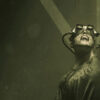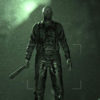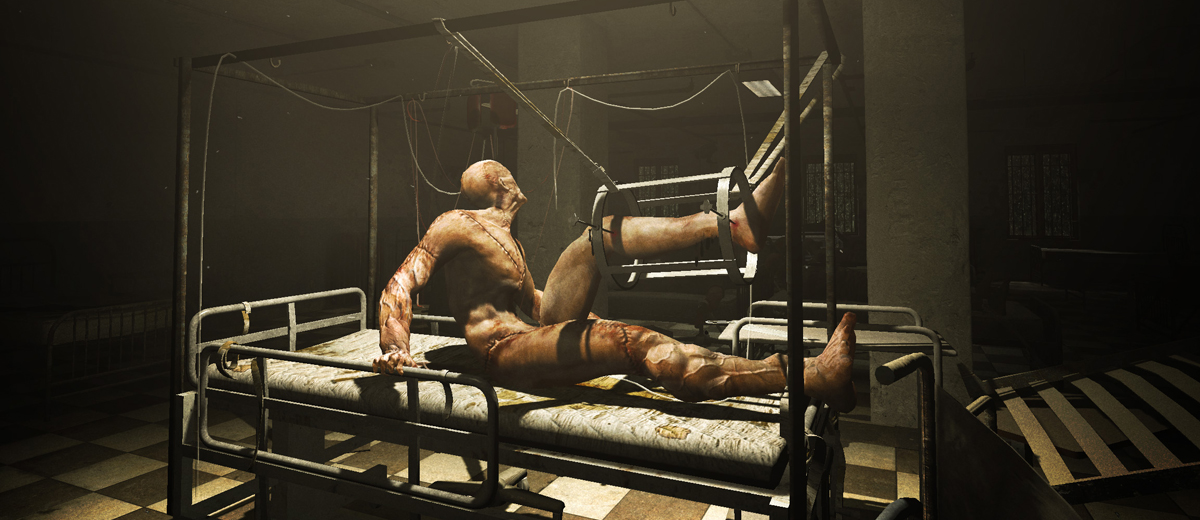
 Outlast sees players stepping into the brave shoes of Miles Upshur, a freelance journalist who receives an anonymous tip about Mount Massive Asylum – a psychiatric hospital owned by the shady Murkoff Corporation. Miles travels to the asylum to find out what’s going on there – but gets more than he expected. The employees’ bodies litter the hallways, the patients are disfigured and roaming free and several asylum employees are using the mayhem as an opportunity to further their own insidious agenda.
Outlast sees players stepping into the brave shoes of Miles Upshur, a freelance journalist who receives an anonymous tip about Mount Massive Asylum – a psychiatric hospital owned by the shady Murkoff Corporation. Miles travels to the asylum to find out what’s going on there – but gets more than he expected. The employees’ bodies litter the hallways, the patients are disfigured and roaming free and several asylum employees are using the mayhem as an opportunity to further their own insidious agenda.
Outlast hovers between the realms of the natural and supernatural as its story progresses to provide a genuinely intriguing journey for the player. Unfortunately, it ultimately culminates in a peculiar conclusion that not every player will be able to appreciate. Regardless, the story is intriguing enough to keep players engrossed from beginning to end – assuming you can get through it without having to stop.

The effectiveness of a good horror game is rooted in its presentation, and Outlast thankfully understands this and delivers in droves. While it’s not pushing the PS4 to its absolute limit – it brings every corridor and room to life with the most minute of details. Whether it’s the subtle glow of a television subtly lighting up a room, floating dust at the end of a dark corridor or hundreds of flies around a pile of discarded bodies and viscera – every environment in Outlast feels alive or has a story to tell despite the dilapidation of it all. A nice touch for the presentation is Miles stepping into a pool of blood and leaving footprints behind – progressively getting distant as he makes more steps. It’s a minor detail, but adds an extra level of realism to the game’s presentation. The enemies themselves are a bit of inconsistent when it comes to their presentation, as up close they look a little bit more ridiculous and less menacing than when they appear as distant silhouettes in the dark. Character models are re-used sporadically as well throughout the entire game which can be a bit jarring.
The game shares similar accomplishments in its sound design – synchronizing the characters heartbeat and breathing to the rumble in the controller is a clever but simple way to feel connected to the player character. The ominous and eerie soundtrack helps add to this tone and atmosphere to create situations where the player is scared to even turn a corner – tracks that employ booming percussion add to the tension of the high intensity chase scenes as well. It’s all very simple sonically, but it works very well. Voice work is serviceable, if not slightly over the top, but it does its job well.

At its crux, Outlast feels more like an interactive game of hide and seek that strips away the conventions we’ve seen in more recent horror titles like Resident Evil and Silent Hill. Taking a page out of the classic franchise Clock Tower’s book, players must navigate environments while avoiding confrontation. The game can more or less be split into two distinctly designed scenarios – “haunted house” scenarios where players walk through linear passages, finding crucial items while the game attempts to scare the player – either by throwing a body at them or making something “pop out”. There are also more open “hide and seek” scenarios, which opens the game up a bit more and requires players to complete a set of objectives – all while avoiding an antagonist. The transitions between these two kinds of gameplay are smoothly handled, though as the game progresses it becomes easier to predict what you’ll have to do next as it does seem to re-use the same formula regularly.
Being a journalist, Miles has brought a video camera along with him, and it’s used to great effect in Outlast. The camera provides a good way to look at something without getting closer to it with it’s zoom feature, for example. A night vision mode (which is powered by batteries, which themselves are limited) also helps heighten the tension during darker sections of the game. Night vision is used to great effect to mimic great horror films like Blair Witch Project or Silence of the Lambs. There were times where it would’ve been better for the camera to be used more dynamically to scare the player – for example making the environment react to the player zooming or providing scares between a change of batteries when the camera is lowered. One caveat of setting a game entirely in the dark is that there are bound to be some things the player will miss if they’re not looking at them, though this might be a blessing for more anxious players.
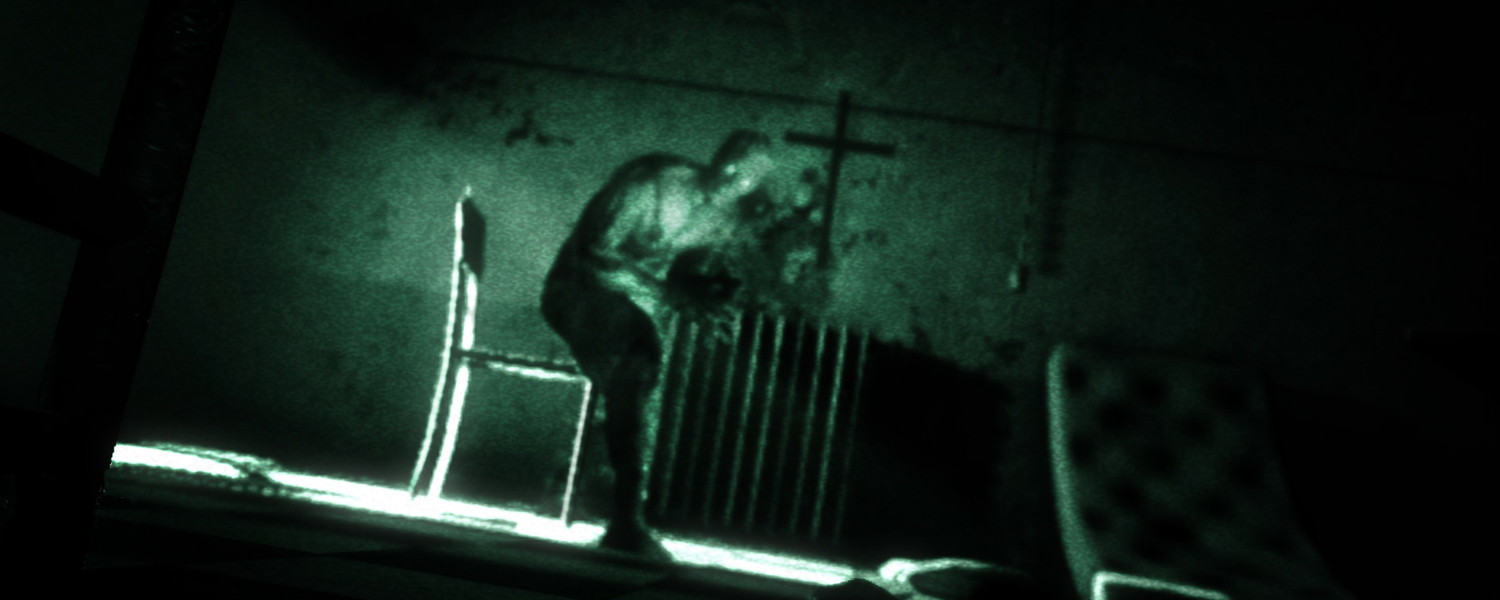
As players progress through the game they’ll see things jump out at them, appear behind them, run after them or simply make noise. They’re simple scares, and they work well, but those more seasoned in the genre will tire of them quite quickly as they become progressively predictable. When being chased by an enemy, the game seems more at odds with itself – encouraging the player to close doors behind them to slow down pursuers but hindering the player due to the more cumbersome controller based control scheme. There were more than a few times when I locked myself in a room with a pursuer rather than closing the door behind me. This would work great on a mouse, but doesn’t translate well to a controller.
Running away from enemies is certainly fun, if not slightly stressful. Players can peek behind their character easily but take their eyes off from in front of them, leaving themselves open to running into objects and allowing their pursuer to catch up. It’s a great system that allows you to give into your curiosity but at the same time has the potential to punish you for it. Hiding is just as tense, but it’d be nice if the game allowed certain items to be interacted with to provide more of an advantage to the player – like throwing a bookshelf on a pursuer, for example. Running is a good option, but it just seems so bare bones and can get a bit repetitive over the course of the game’s six hour journey.
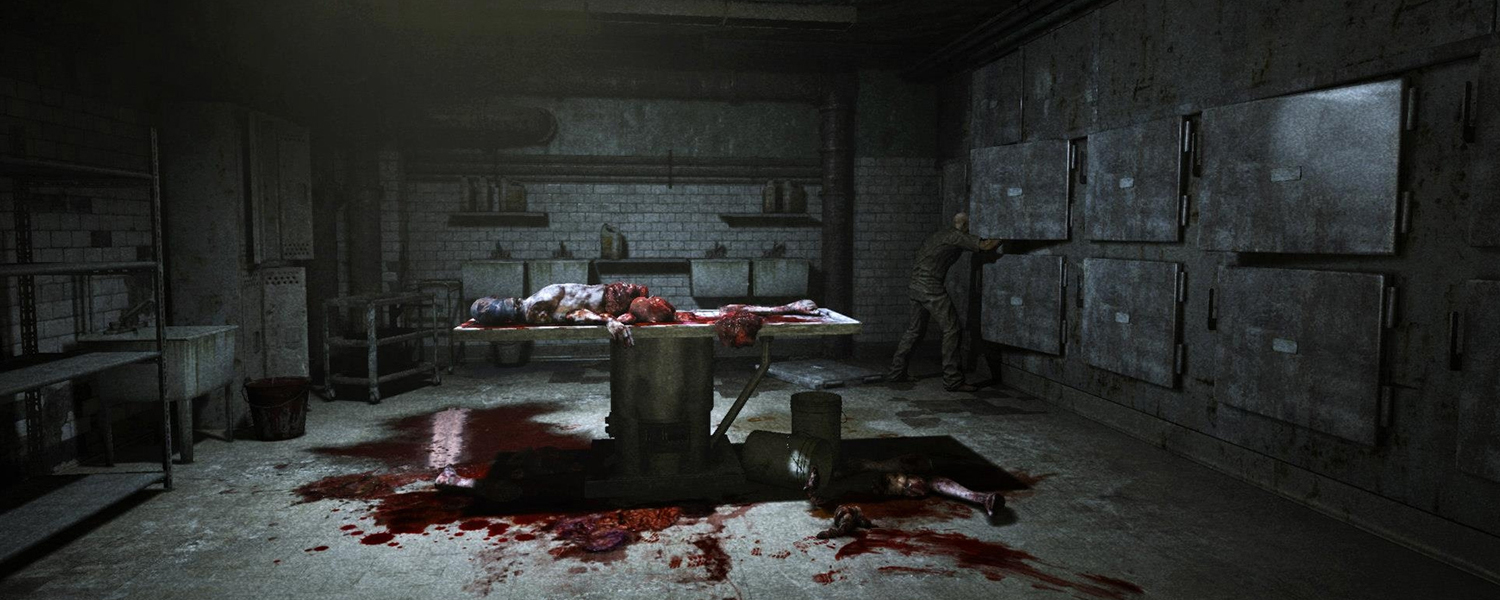
Those who are curious enough to explore every nook and cranny of Mount Massive can find documents lying around that give backstories to the patients chasing Miles as well as backstory to the events. These are well written and also give players more information on the game world without needless exposition. If players film the right moments with their camcorder, they’ll also be granted to “notes” which are Miles own take on the events in the game. These are great inclusions that give insight to Miles’ character, though the only tangible benefit to collecting them (besides learning more about the story) is to earn trophies.
